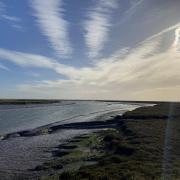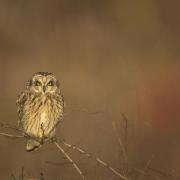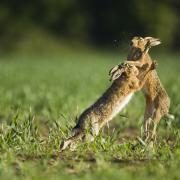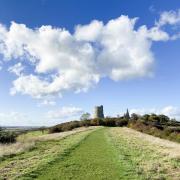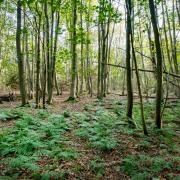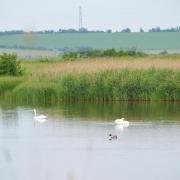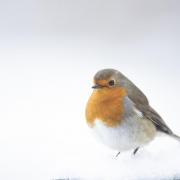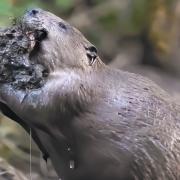While Tiptree is best known for the world famous jams produced in the village by Wilkin & Sons since 1885, Petra Hornsby discovers that there is much more for residents and vistors to enjoy

Think Tiptree and your first thought is likely to be jam — and jolly good ones at that. This village, one of the largest in the country, has been linked to internationally-recognised preserves under the name of Wilkin & Sons since 1885 and plenty of visitors come to see the jam factory, museum and sample the wares in the tea rooms. But there is another significant attraction for all to enjoy which is currently undergoing a major conservation project.
Lowland heath once stretched across 16 Essex parishes, but Tiptree has retained perhaps the largest part with its heath still covering 61 acres. It is thought that smugglers once used the local water inlets, would hide their contraband in the heather and scrub. Today, Tiptree Heath is home to three species of heather – Common Ling, Bell Heather and Cross Leaved Heath – and it is the only place in Essex to find Allseed and Chaffweed plants as well as other more common plants such as gorse and bracken. The site is unique and has been declared as a Site of Specific Scientific Interest.
It is also an important place for wildlife, with nightingales, woodcock, yellowhammer, dormice, water voles, badgers and grass snakes all taking advantage of this special habitat. Some of these species might be a little shy and hard to spot, but visitors will enjoy seeing the small herd of ponies that have grazed on the site since 2011. The ponies are there for the best part of the year, arriving in late spring, but, in order to avoid the heath being overgrazed, they enjoy an annual holiday to Tollesbury Wick.
This part of the village is common land and was first recorded as such in 1401, with locals making use of the space to graze their cows, sheep and ponies. Overall it features two ponds, a stream and large areas of woodland.

Tiptree Heath is managed by Essex Wildlife Trust and is one of the 87 nature reserves the trust takes care of across the county, with the help and support of its 34,000 members.
Joan Pinch is site warden, a role she has enjoyed for 12 years, and Joan is also a great source of information about the heath. Her job was created to co-ordinate the heathland restoration project by working with outside agencies who could provide expertise and support and to also rally volunteer work parties. She also works within the community in an educational role to reinforce the importance of the heathland as a rare wildlife habitat and the need for its conservation.
And right now is a very important time for Tiptree Heath as it undergoes a vital restoration project, as Joan explains: ‘Tiptree Heath is lowland heathland which was created many centuries ago by man’s need to use its vegetation for domestic purposes, thus producing open land on poor soil which led to the site becoming covered in heather. If left to its own devices, the land would be taken over by trees and scrub which are stronger than the heather and, eventually, it would return to woodland with little undergrowth. The heath has its own special associated wildlife. Being in the East of England, it provides important stopping off places for migratory birds and is therefore considered a valuable habitat to preserve.’
Volunteers from the local community have clearly played an important role in helping to clear the scrub, but Joan explains how, by the end of the last century and largely using hand tools, they were fighting a losing battle.

‘The foot and mouth epidemic, which closed access to the countryside, was the final straw, so a group of agencies, under the chairmanship of Peter Wilkin, the heath owner, formed a planning committee in 2003 to step up the conservation effort using machines and, latterly, grazing animals.’
Clearly, some funding was needed for the new approach and this came from a few sources, but largely from a ten-year Higher Level Stewardship (HLS) Agreement which was awarded by Natural England in 2006.
Joan expands further: ‘To set up this agreement, a charity called the Friends of Tiptree Heath was formed, and this, with Essex Wildlife Trust, took out a Farm Business Tenancy for the heath in order to manage it on behalf of Mr Wilkin.’
So with the HLS agreement coming to an end this year, what is the position of the project and is there more to be done?

Joan says: ‘The project was aiming towards achieving favourable conditions for the site, but we have been told that this might not happen by 2017 due to the size of the site and the outside influences on it. The advice has been to apply for more funding via the new Countryside Stewardship scheme – a five-year scheme. We need a few more years to get there and the final, hoped for, result will still be a mosaic of heather heath areas with useful scrub vegetation surrounded by woodland.’
Joan is also a member of the Friends of Tiptree Heath (FOTH) and is secretary to its trustees. ‘The FoTH volunteers have joined in projects across the community to help improve “stepping stones” for wildlife, such as school pond renovation, wildlife surveys of local green spaces and barn owl nest box installation. They have also instigated gardening with wildlife projects and have plans to create a community wildlife garden on wasteland in the centre of Tiptree for which funds have been granted to expedite throughout this year.’
Joan has been a Tiptree resident since 1970 and is clearly a fan of the county’s natural scenery that has surrounded her over the years, so what does she like best?
‘The countryside amazes me with its many varieties of landscape – from the stunning coastline with its estuaries and species of seabirds and waders, to the beautiful river valleys hidden amid farmland. Not to mention all the woodlands with their deer, badgers and other mammals. And all this beauty under remarkable skies.’
The project being undertaken on Tiptree Heath by Essex Wildlife Trust, Joan, The Friends of Tiptree Heath, other agencies and groups is a great reminder that we shouldn’t take our wildlife for granted and that plenty of hard work needs to go into maintaining natural habitats for all of us and future generations to enjoy.
Joan adds: ‘Tiptree Heath is a special place. To experience the enjoyment of a walk in a beautiful, rare location with the opportunity of getting close to wild, grazing animals, as well as coming across many friendly people who also care about their environment, is very special.’






